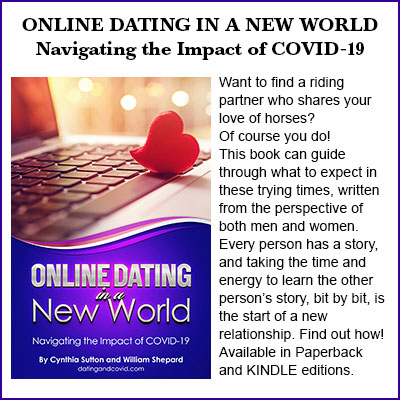Recreation & Lifestyle
Welcome to Recreation & Lifestyle, which includes leisure riding and other aspects of the equestrian lifestyle for you and your horse loving friends and family.
Looking for the perfect present? See the Gifts & Jewelry section. Redecorating? Find a Painting, Photograph or Sculpture in the Artwork section. Need to check out a movie or crawl up with a good book or magazine? See our Entertainment section where you will find and Books, Movies, Games, and Magazines. And don't forget about Fine Art in some specialty Museums that might surprise you.
Looking for love or a trail buddy? Riding Partners is the spot to seek other riders who share your passion. Find a place to ride with that special person in our Trail Riding section and if you need more time away, take a look at Vacations. Want to know about the next horse show or special event? Don’t miss it! Dates and locations are included in the Calendar of Events for Recreation & Lifestyle.
Do we need to add more? Please use the useful feedback link and let us know!
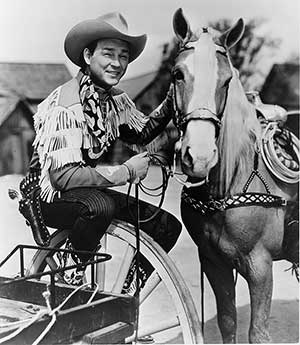
An excerpt from Happy Trails: A Pictorial Celebration of the Life and Times of Roy Rogers and Dale Evans by Howard Kazanjian and Chris Enss.
Early in Roy Rogers’ career as a Western star, Republic Pictures created a fictitious promotional campaign to introduce him to the public. Press agents decided it would add to Roy’s appeal if they told potential moviegoers that he was a real cowboy born in Cody, Wyoming. Citizens in Wyoming and Ohio wrote to the studio protesting the false reports. Within a few days an accurate biography of Rogers was released.
The studio sent Roy on press junkets after each of his films was released. According to Republic executives, Roy came across much better in person than on the screen. They felt his eyes were more expressive and his shy smile more appealing. Fans agreed, and his personal-appearance tours proved to be profitable ventures.
Roy was grateful for his success and went out of his way to show his gratitude to his family and friends. With a portion of the money he earned, he purchased his parents a home in California and got the Sons of the Pioneers a contract working with him in all his Westerns. He felt a deep sense of satisfaction to be doing something for those he loved and those who had befriended him in the lean years.
While actors Roy Rogers, Gabby Hayes, and Dale Evans and members of the crew were waiting to shoot a scene in Helldorado, Gabby entertained everyone with humorous stories of his vaudeville days. Dale was listening to the tale while sitting atop her horse. When the story ended she let out a loud laugh and in the process dug her heels into her ride’s side. The horse took off like a shot, and Dale tried desperately to regain control of the spooked animal.
Roy quickly recognized that Dale was in trouble. Her horse was at full gallop and despite her screams, the steed would not stop. Roy quickly jumped on Trigger and took off after Dale. Once Trigger caught up to Dale, Roy reached out and scooped his costar off the frightened horse.
No one associated with a Roy Rogers movie was surprised at the actor’s heroics. Roy was a great deal like the characters he played on the screen: daring, helpful, and as patient as Job. In a letter home to her parents, Dale explained the daring rescue. She wrote that Roy was a courageous family man who talked constantly about his wife and two children. She believed that she had never met a more giving person in her life.
Read more: Three Stories of the King & Queen of the West: Roy Rogers and Dale Evans
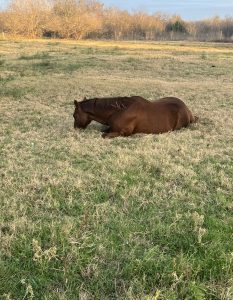
By Margaret Ransom
Margaret Ransom, an award-winning writer who has worked in the horse racing industry for decades, moved from California to Texas and started The Bridge Sanctuary in 2021. Its mission is to bridge the gap from forgotten horses to forever safe horses. Here’s the latest installment.
I wanted to update you all on Blanche, the pregnant Tale of the Cat mare pulled from a last-chance-before-slaughter auction back in September.
Great expectations
Since she got here, everyone at The Bridge Sanctuary maintained a palpable excitement for Blanche’s bundle of joy arrival, me especially, like an expectant grandmother for my daughter who had had trouble conceiving. Blanche is inherently sweet and kind and trusting and I looked forward to putting my arms around Blanche’s belly at least once every day to talk to the little one growing inside, telling it how much I couldn’t wait for its arrival and that I loved it.
I was always concerned knowing what I knew about her past, but the pregnancy for Blanche seemed to be going swimmingly. Until it wasn’t.
It was an unseasonably warm December day for Texas, and it started out ordinary and routine, just like every other. At each meal, morning and night, all the horses, ponies, donkeys and goaties who call The Bridge Sanctuary home get a customary once-over, my eyes searching for any bumps, scrapes and cuts and abrasions or, God forbid, blood.
Blanche always got a little extra time, my eyes searching for any signs a baby was coming. We knew she had previous foaling issues and it felt like I was always on alert for something that said she might deliver early. Up until and including that day, there were none. No bag, no wax, no discomfort. Nothing.
“Nope, no baby today,” I said to her as I walked back to the tack room and exhaled with relief. Now foaling out mares is not my forte, I have done it a few times and always successfully in my past, but I had made plans for Blanche to go down the road to our veterinarian, Dr. Jackie Rich’s Deer Haven Farm in nearby Lott, or to my friend Donna Keen’s farm up in Burleson.
While I’m not exactly a foaling rookie, it had been a long time and things here at The Bridge weren’t exactly ideal for foaling, at least up to that day. And I wanted Blanche and her baby to be with other mares and foals, not the handful of seniors, ponies and donkeys who call the sanctuary home. But God had other plans that Thursday…
Read more: Heartwarming Tale Of Blanche: First Grief, Then Good Fortune
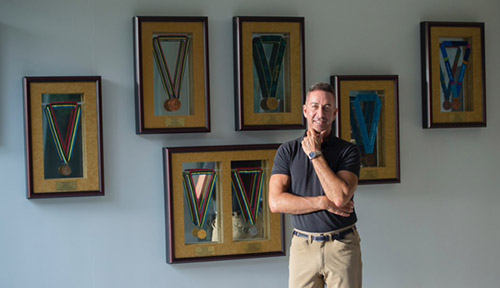
By Robert Dover
Today, I get asked two questions all the time:
• “ How can I become successful and make my riding dreams come true when I do not have the money I need for horses, training, and competing?”
• “How can I get a sponsor?”
These are both legitimate questions, especially in a time when a great horse may cost hundreds of thousands, if not millions, of dollars. I always consider the person who asks me these questions and that rider’s ultimate goal, whether it is the Olympics or to be a good professional trainer in a specific area of the country. I explain the hard work, dedication, focus, humility, sense of humor, honesty, and grit required of anyone seeking to be excellent in any endeavor in life. I also emphasize the need to love and embrace the road being traveled—its highs and lows, successes and failures—in order to find true happiness along the way.
Finally, I tell it like it is, explaining that there are normally two reasons someone chooses to sponsor a rider: Either the sponsor has an emotional attachment to that person and wishes to help as a parent might help a child, or the sponsor is attracted to the prior and potential achievements of the rider and wants to become a part of that success story.
Read more: Three Ways to Find Your Way - An Excerpt from "The Gates to Brilliance"
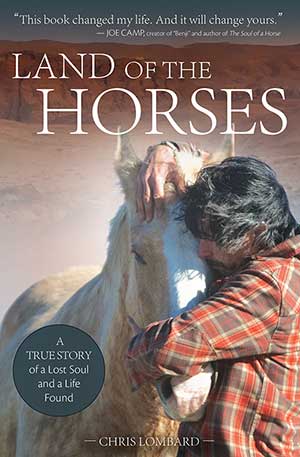
By Chris Lombard
The dirt road to the farmhouse was dark and tangled. I turned on the dome light to look at the directions she had given me. The windows were down, letting in a cool breeze and the sound of car wheels over gravel. Like a flashlight in a cave the headlights lit the road and the walls of thick Maine woods to each side, and I watched the farm appear out of the darkness. I hoped the drive would be longer, just a bit more road. I wanted time. Maybe to think about what I wanted to say.
Maybe to just delay the inevitable.
As I walked up to the front door, I felt like I was going into the job interview of a lifetime.
“Did you find the place okay?” Allison asked as I stepped inside.
“Yes,” I said. I was nervous, that twist in my stomach like when we were on our first date. Her hair was down over her shoulders. Long, dark, with that slight curl at the bottom it sometimes had. Usually in the mornings. Perfectly spread over the pillow beside me.
She was house-sitting, taking care of the farm and its animals. She asked if I would like something to drink and then silently showed me around, going through the motions as if we were mere acquaintances. Neither one of us made the move to talk, letting the thickness in the air grow. And then, like she didn’t know what else to do, she said it was time to take care of the horses…I could come with her to the barn if I wanted.
Allison fed the two horses while I sneezed and rubbed my itchy, watering eyes. Hay fever. It hit the moment I even thought about going near a barn.
“Wow. Horses are big,” I said, nose all stuffed up.
“They are but they don’t know it,” she replied as she filled their water buckets.
I stood there, eyes feeling puffy and red. The horses were beautiful in their form; I couldn’t believe this was the first time in my life I had seen one up close. I suddenly felt foolish for not ever doing this before. I liked their sounds and motions while they ate. It made me feel good. They would grab a bite of hay and then raise their heads to look at me while they chewed, then grab another bite and raise their heads again to look at me, all very content in… their world.
Read more: In Their Eyes - Book Excerpt from Land of the Horses
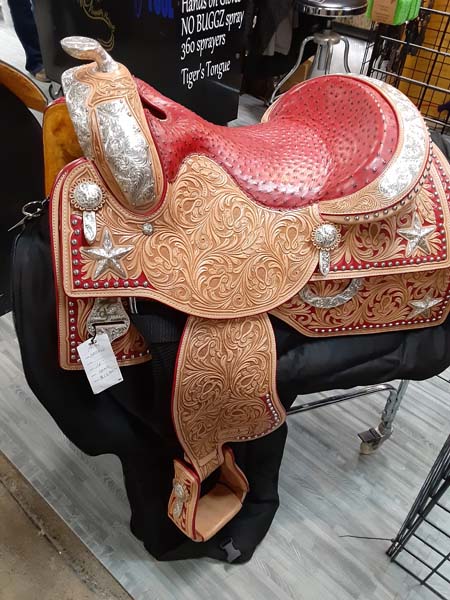
As a credentialed member of the press, we’re happy we covered the 2021 Equine Affaire Eastern States Exposition in West Springfield, MA on November 11th – 14th. Equine Affaire is North America’s premiere equine exposition and equestrian gathering . . . a unique celebration of the horse offering unparalleled education, entertainment, and shopping opportunities.
Here are some of our favorites from this exciting exposition and trade show. And check out the VIDEOS on our YouTube Channel!
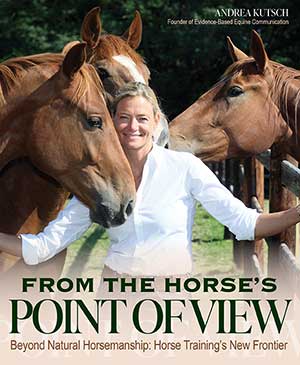
By Andrea Kutsch
The problem with most horsemanship instruction is that the reader can interpret the written word in many ways. In addition, every person who is involved with horses interprets horse behavior in a different way, according to the person’s own experiences. It is, therefore, very important that we agree on a “common denominator” and accept something that has been scientifically examined and proven: Horses fundamentally do not mean us any harm.
The equine nervous system processes signals that affect the horse incredibly quickly, especially on an emotional level. The human nervous system tends to act more on a strategic, planning level. Horses need to act quickly to ensure their survival. One wrong decision can have fatal consequences. When confronted with an external stimulus, horses have to decide whether to leave the situation—take flight—or to stay and wait to see what happens, focus, and attack if necessary. They have the option of driving away the stimulus or the person influencing their behavior.
Emotionally relevant external stimuli that have an effect on the horse have been scientifically proven to also have a major direct influence on the release of hormones controlled by the brain. These hormones then have a lasting impact on how the horse will behave in similar situations in the future.
Read more: Horses Can’t See Ghosts - an Excerpt from "From the Horse’s Point of View"
- Champion Boxer Finds Peace and a Second Chance with Horses
- Irish Summer - An Excerpt from Still Horse Crazy After All These Years
- Decorated Olympian Shared Abuse Story to Save the Children
- StreamhorseTV's Tokyo Takeaways - Eventing Recap
- Tokyo 2020 Olympics Equestrian Events
- Soaked Hay and Farrier Smoke - An Excerpt
- Mountain Tour, an Excerpt from Embrace of the Wild by Linda Ballou
- The TOP 10 Mistakes People Make when Buying a Pleasure Horse
- Marion County Public Schools new reading program, students learn about equine industry
- Excerpt from "A Filly Called Easter"






